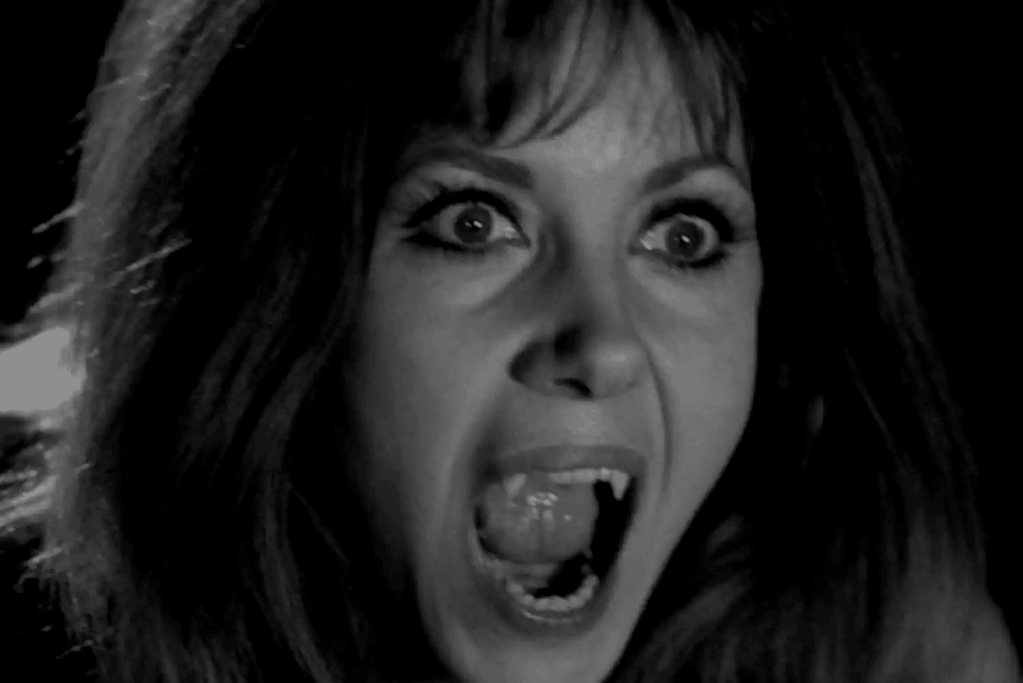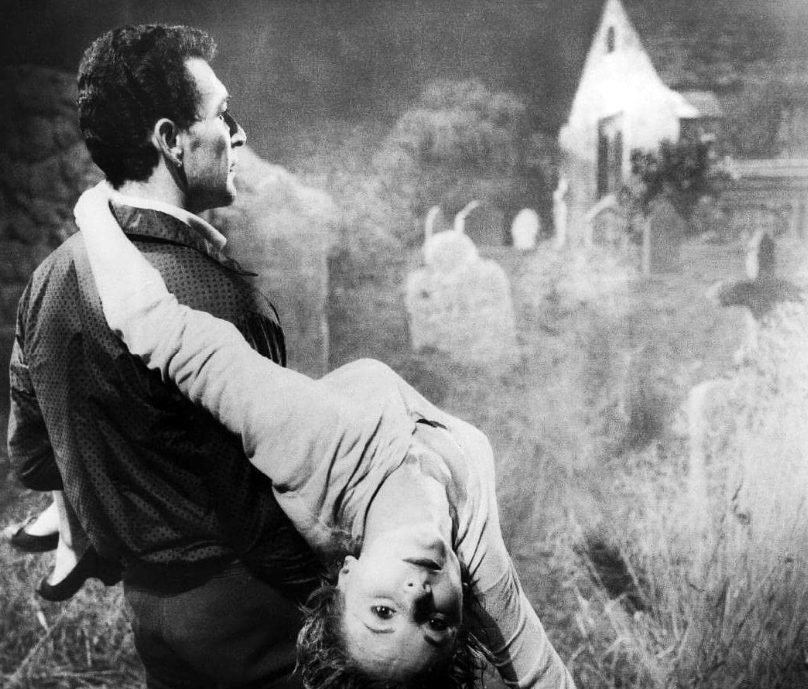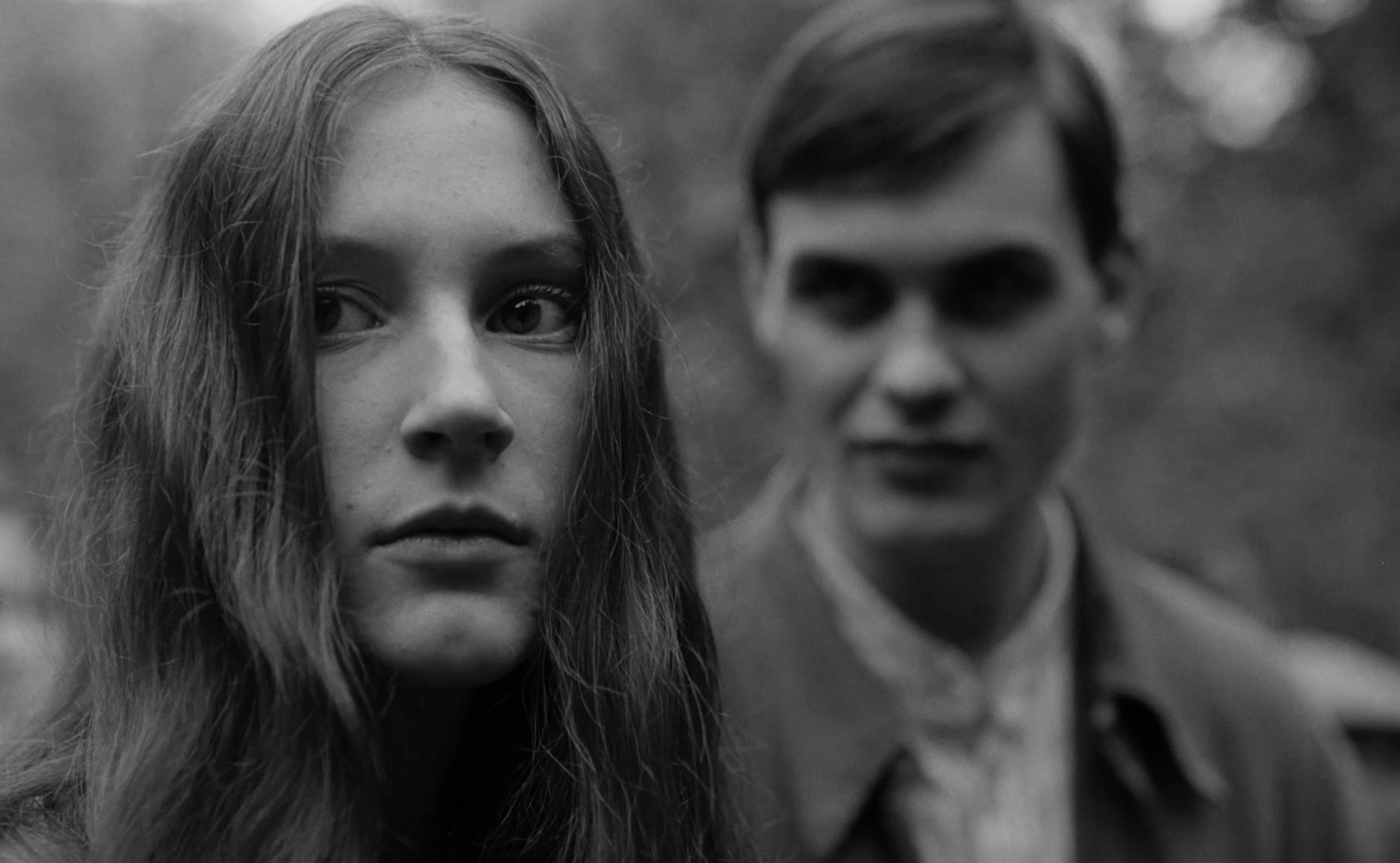Film
The Vampire Lovers
A Fiftieth Anniversary Retrospective
In an in-depth feature, cultural historian John J Johnston looks back at the inception of Hammer’s most important productions of the 1970s, and endeavours to reassesses the film’s reputation, over fifty years after its release…
Fifty years ago, on 4 October 1970, just in time for the impending Halloween market, Hammer unleashed its latest production, via the ABC cinema circuit, onto a largely unsuspecting British public.
While many of the traditional and anticipated Gothic elements of Hammer horror were present, The Vampire Lovers (Roy Ward Baker) was specifically intended to exploit the newly expanded freedoms offered by the British Board of Film Censors’ revised ‘X’ Certificate. It was an important moment for Hammer as they tested largely uncharted waters and the film performed well at the box office, garnering some degree of praise from critics and public, alike. However, during the last half-century, the film has undergone a number of reappraisals; most recently, The Vampire Lovers seems to be generally regarded as a slice of early Seventies’, somewhat camp, prurience, often, unfairly, discussed in similar terms to the plethora of unappealing and unfunny British sex-comedies, which filled cinemas during that decade.
The circumstances around The Vampire Lovers’ inception were somewhat unusual in that James Carreras, the Chairman of Hammer Films had been casting around for suitable properties, following the departure of long-standing collaborator Anthony Hinds, responsible for producing many of Hammer’s major horror films from The Quatermass Xperiment (Val Guest, 1955) onwards, when he was approached, in September 1969 by Harry Fine and Michael Style. Dublin-born Fine was enthused by the 1872 vampire novella, Carmilla written by fellow countryman Joseph Le Fanu (1814-1873). This early vampire tale had long been in the public domain and the producers, aided by scriptwriter, Tudor Gates, thought it an ideal subject for Hammer.
Their intention was to emphasise the novella’s lesbian elements in a manner, which might exploit the imminent changes to the British Board of Film Censors’ ‘X’ Certificate. The rating had remained unchanged since 1951, but in light of societal and artistic moves, plans were afoot to raise the minimum age restriction from sixteen to eighteen years, allowing filmmakers greater freedom in the range of adult themes they could present onscreen. The change did not, ultimately, occur until 1 July 1970 and The Vampire Lovers’ release date was delayed to prevent difficulties with the censor, although there was, as might have been expected, considerable correspondence between Hammer and the BBFC, in light of the film’s horrific and sexual themes.
The idea of presenting Carmilla on screen was not, however, a new one. The Danish director Carl Theodor Dreyer had written and directed a loose adaptation, Vampyr, in 1932, while Roger Vadim directed Et Mourir de Plaisir in 1960, with his then wife, Annette Stroyberg as Carmilla. Christopher Lee starred in a1964 Italian adaptation, as Count Ludwig Karnstein in Camillo Mastrocinque’s La Cripta e l’Incubo, while most fascinatingly, Jane Merrow portrayed Carmilla in a now, sadly, lost television adaptation for the ITV anthology series, Mystery and Imagination (ABC Television, Bill Bain, 1966).
Given Hammer’s continuing fascination with both the fangs and plunging décolletage of its female vampires, ever since Valerie Gaunt’s appearance in Dracula (Terence Fisher, 1958), the prospect evidently appealed to Carreras, and, although there was, at that point, no finalised script, he immediately booked sound stages at Elstree Studios from 19 January—only four months distant—and began seeking an American distributor to provide necessary funding.
Precise dating for these preproduction meetings is difficult to determine but in her autobiography, Life’s A Scream, the film’s star, Ingrid Pitt, recalls meeting Carreras for the first time at a party following the premiere of Alfred the Great (UK, Clive Donner). However, the premiere—an appropriately royal event in Leicester Square—had taken place on 14 July 1969. It is more likely, therefore, that their meeting took place following a screening on 1 October, the date when The Vampire Lovers went on general release, given that Pitt recalled visiting Hammer House on Wardour Street the next day, dressed appropriately for the heavily falling snow.
In any event, Polish-born Ingrid Pitt, at that point an American citizen, was offered the most important film role of her career, with Carreras, subsequently, entering into necessary discussions with the Home Office, in order to convince them that no British actress was capable of effectively portraying Mircalla Karnstein.
By 25 November, an agreement had been successfully negotiated between Hammer and American International Pictures, under the stewardship of James H Nicholson and Samuel Z Arkoff, renowned not only for a series of elegant adaptations of the works of Edgar Allen Poe, produced between 1960 and 1969 but also some lurid and cheaply produced exploitation features.
The artistic direction of The Vampire Lovers lay in the balance…
In fact, the film’s notorious nudity is remarkably tame by modern standards and is, gratifyingly, matter of fact. In a world away from the tittering voyeurism infecting so much British cinema of the period, Baker handled all scenes of a sexual nature with absolute seriousness and, in an interview, prior to a screening of the film at London’s Barbican Cinema in 1996, Ingrid Pitt was remarkably sanguine about her nude scenes, commenting that she was glad to have been captured on film for posterity, while she was ‘young and juicy.’ Overall, The Vampire Lovers feels considerably less exploitative than its sequel, Lust for a Vampire (Jimmy Sangster, 1971), which had completed filming, sans Pitt, even before The Vampire Lovers’ premiere on 3 September, such was Hammer’s belief in the Karnstein franchise.
It is also worth noting that Hammer was not, in any event, unused to presenting nudity in its films. Both The Man Who Could Cheat Death (Terence Fisher, 1959) and The Mummy (Terence Fisher, 1959), contained scenes, specifically reshot for the European market, requiring both Hazel Court and the handmaidens of Ananka, respectively, to disrobe.
Tudor Gates submitted his finalised screenplay on 15 December 1969 and a lavish press launch, in advance of filming, was held at London’s Savoy Hotel on Tuesday, 6 January 1970. Peter Cushing and Dawn Addams were present along with Ingrid Pitt, who was introduced as the new face of Hammer for the new decade.
With Pitt at its centre and Peter Cushing in a guest-starring role, specifically requested by AIP, The Vampire Lovers, arguably, boasts one of the largest and strongest casts of any Hammer Film. While only Cushing, at this point, could have been described as a ‘star,’ it is a solid ensemble cast of recognisable faces.
Douglas Wilmer (Baron Hartog) was known as the star of the BBC’s Sherlock Holmes series, appearing in twelve adaptations of Doyle’s tales between 1964 and 1965, in addition to bringing considerable gravitas to a number of substantially budgeted, international epics, including Cleopatra (Joseph L Mankiewicz, 1963), Jason and the Argonauts (Don Chaffey, 1963), and The Fall of the Roman Empire (Anthony Mann, 1964).
George Cole (Roger Morton) had been working in films since 1941, steadily building his reputation as an adept comic actor, under the patronage of Alistair Sim, before achieving a degree of stardom as Flash Harry in Launder and Gilliat’s St Trinian’s series between 1954 and 1966. The character was an obvious precursor to that of Minder‘s slippery Arthur Daley, the role which cemented Cole in the affections of the British public (ITV, 1979-1994).
Despite hailing from Felixstowe in Suffolk, Dawn Addams’ (The Countess) glamorous life encompassed Hollywood, including an uncredited appearance in Stanley Donen’s classic, Singin’ in the Rain (1952) and marriage to Don Vittorio Emanuele Massimo, Prince of Roccasecca, which featured on the cover of Life magazine in May 1954.
Ferdy Mayne (The Doctor) had a substantial film career in Britain before portraying the chief vampire, Count von Krolock in Roman Polanski’s Hammer parody, Dance of the Vampires (1967). He had also appeared with Ingrid Pitt in the iconic WWII action film, Where Eagles Dare (Brian G Hutton, 1968).
In the small but important role of the Landlord, Charles Farrell was cast. This Dublin-born actor had been appearing in films since 1921 and, as a regular performer in London’s West End, had been a founding member of the British actors’ union Equity, in 1930. Sadly, he delivers a peculiarly stilted performance, which is certainly is not aided by his largely expository dialogue.
In addition to these recognisable faces, The Vampire Lovers showcased a number of younger actors, who would go on to become substantial players in British film and television. Both Madeline Smith (Emma Morton) and Kate O’Mara (Mlle Perrodot) became, through their later roles, bona fide icons of British horror and fantasy, while Jon Finch (Carl Ebhardt), shortly thereafter, took starring roles in major feature films for Alfred Hitchcock and Roman Polanski.
Peter Cushing (General Spielsdorf), Hammer’s major star, delivers a typically polished performance as the distraught and grieving uncle in a relatively brief role.
Scott MacGregor’s production design is a joy to behold with carefully delineated looks being created for each of the three main settings. The grandeur of Spielsdorf’s glittering home, complete with ballroom, is fully befitting an officer of the imperial Hapsburg army and contrasts well with the rather chintzier décor of Morton’s abode, which is a riot of busy wallpapers and Neoclassical allusions, evidenced by the statuary and Piranesi prints, adorning the sets.
Castle Karnstein is a suitably foreboding environment, composed of lofty but crumbling architecture and dark corners, beneath a heavy covering of cobwebs, much of it repurposed from MacGregor’s church set, created for Taste the Blood of Dracula (Peter Sasdy, 1969). The chapel where Mircalla is ultimately dispatched is a glorious confection of painted plaster and stained glass, evoking the Eastern Orthodox influences of Medieval Styria. We know from the inscription on Mircalla’s sarcophagus, ‘1522-1546,’ that she lived during the Protestant Reformation of Styria, however, the chapel clearly predates this and is unlikely, in any event, to have been in regular use by the malevolent Karnsteins.
The painted flats, which form the background to the exterior of Castle Karnstein are effectively realised, although, perhaps a little too obvious in certain scenes, particularly when viewing the film on the big screen or on Blu-ray. The majority of the film, it must be admitted, is somewhat over-lit, both in the day for night exterior shots, and on the studio sets. It is a common problem in Gothic horror films of this nature, where artistic decisions must constantly be made between atmospheric reality and elegant splendour. Thankfully, Hammer always favoured the latter.
The three main locations of Moor Park Mansion in Rickmansworth, completed in 1720, and Wall Hall Mansion, built in1802, are well-chosen, perfectly fitting both the time period of the film and the nature of their respective inhabitants, while Moat Mount open space, near Edgware, makes for an agreeable change from Hammer’s somewhat overused Black Park.
Harry Robinson’s score for The Vampire Lovers is a work of delicate complexity, combining various themes, at certain points, lush and erotically charged, while at others, discordantly emphasising the horrific impact of the visuals. Although the film lasts only ninety-one minutes, it contains a substantial seventy-five minutes of music, which was written in only ten days, as such the score is a fundamental aspect of the overall production. It is worth noting that the gentle, somewhat playful theme, played as Mircalla and Emma descend the stairs for dinner, was reworked by Robinson three years later as the unsettling ‘Dance of the Dolls’ for Peter Sykes’ magnificent horror comedy, The House in Nightmare Park (1973).
Ingrid Pitt’s performance as Mircalla Karnstein is central, not only to the narrative thrust of The Vampire Lovers, but also to its commercial and critical success. It is understood that Shirley Eaton, famed for her appearance as ‘golden girl,’ Jill Masterson, in Goldfinger (Guy Hamilton, 1964) had been interested in the role and that Peter Cushing had, initially, actively supported her casting, not least as both performers shared the same agent, John Redway.
Eaton had recently appeared in two Harry Alan Towers’ films as Sax Rohmer’s villainous Sumuru and evidently believed that she might corner the market in exotic villainy. James Carreras opined that she was ‘too old’ for the role, although in truth, the two women were born at either end of the same year. Consequently, Pitt’s age was adjusted downwards for publicity purposes, where she was described as having been born in 1945, rather than 1937.
In preparation for the role, Pitt met with director, Roy Ward Baker, to read through the screenplay and discuss how they might best approach the material. It was apparent to both that there were expectations to play up the exploitative, sexual elements but, having read Le Fanu’s original, neither was inclined to take this route.
They, instead, emphasised the character’s desperate isolation from life, love, and humanity. Pitt’s Mircalla, although undead for centuries, remains a very human protagonist; she is fully aware of those aspects of life in which she can no participate. Pitt’s scene with Emma in the gazebo, pavilion, captures this perfectly: she sits, determinedly, in the shade and scoffs at Emma’s suggestion that the sun is ‘like life,’ before being confronted by the passing funeral cortège of one of her most recent victims, at which point the audience realises how tenuous is Mircalla’s control of her situation. She is happy in her human pretence but aware that every day spent in Emma’s company wears the veneer ever thinner. In snapping at Emma, ‘You must die! Everybody must die!’ she is clearly troubled by the memories of her own demise and the distress that Emma’s death will shortly cause but she simply cannot help herself.
An earlier scene in the film has Mircalla pronounce that the romantic novel she has been reading aloud to Emma is ‘a silly book.’ In so doing she scoffs, not only at the heterosexuality of the text but also the idea of courtly romance. Pitt’s Mircalla is a creature of enormous passions, aching with some three hundred years of frustrated yearning. She fully understands the realities of life and death in a manner, which Emma cannot begin to comprehend.
In Le Fanu’s novella, there is a speech, which sadly, doesn’t transfer across to Gates’ screenplay, although it perfectly describes Pitt’s approach to the inherent complexities of Mircalla’s character. The vampire says to Laura:
‘Dearest, your little heart is wounded; think me not cruel because I obey the irresistible law of my strength and weakness. If your dear heart is wounded, my wild heart bleeds with yours. In the rapture of my enormous humiliation, I live in your warm life and you shall die—die, sweetly, die—into mine. I cannot help it; as I draw near to you, you, in your turn will draw near to others, and learn the rapture of that cruelty, which yet is love; so, for a while, seek to know no more of me and mine, but trust me with all your loving spirit.’
This is a ravenous beast, pretending to all around her that she is simply a beautiful young woman but, although she basks in the pretence, she finds it difficult to maintain for herself. The brief moments of Mircalla’s fearful loneliness are clear and effective. In her final battle with John Finch’s Carl, we sense her complete frustration, as her plans go horribly awry in a house filled with garlic flowers and corpses of her own making.
Some years ago, before a screening of The Vampire Lovers at Riverside Studios, Madeline Smith told me that Ingrid had hated wearing the fangs during filming. She had tried to avoid wearing them but the producers were adamant that their vampire should be fanged at certain points in the action; it was the Hammer tradition. Smith recalled her crying a great deal and saying that she looked hideous.
Although, subsequently, as Britain’s much-vaunted ‘Queen of Horror,’ Pitt would come to embrace these dental prosthetics, here she, brilliantly, utilises her reaction onscreen, as she wrestles with Carl. The tears coursing down her face are real and one senses the distress of the actress, conflated with that of the character. It is a brave choice and Baker rightly trusts Pitt’s instincts in a manner reminiscent of Terence Fisher’s handling of Martita Hunt’s distraught response to her own dental prosthetics, for Hammer’s The Brides of Dracula (1960), with Hunt’s Baroness Meinster embarrassedly hiding her elongated teeth behind a makeshift veil.
Baker has said that, as a director, he had always found actresses far more fascinating than actors and, throughout his career, he succeeded in eliciting some fine performances from his female stars, including Margaret Lockwood, Highly Dangerous (1950), Marilyn Monroe, Don’t Bother to Knock (1952), Sylvia Syms, Flame in the Streets (1961), and, for Hammer, Bette Davis, The Anniversary (1968). Whilst these were all experienced film actresses, The Vampire Lovers was Ingrid Pitt’s first starring role and it is a credit to both director and performer that Mircalla is such a rounded and finely nuanced character, when in other hands, she might, so easily, have become a stereotypical fanged vamp.
That is not to say that Tudor Gates’ rapidly drafted screenplay for The Vampire Lovers is faultless. In addition to several slightly tortuous and repetitive flashbacks, there are certain peculiar lapses of logic: in the pre-title sequence, lifted from an incident in Le Fanu’s novella, Baron Hartog steals the shroud of the first Karnstein (Kirsten Betts) the audience encounters, although until her ultimate reveal, she wears, throughout, an all-encompassing grey shroud. The problem is further compounded by Wilmer’s voice-over, which rather overemphasises the shroud’s importance, stating that without its shroud, ‘there could be no night of rest for any vampire.’ It’s not only a curious addition to vampire lore but also somewhat confused, given that vampires are, primarily, nocturnal creatures.
There is rather too much toing and froing, regarding the garlic flowers in Emma’s bedroom with Mircalla’s decision to seduce and murder Renton (Harvey Hall) a somewhat less obvious decision than simply adding Janet Key’s maid, Gretchin to her growing retinue. In many respects this feels like a deliberate effort to shoehorn a heterosexual seduction scene into the film, meaning that, bizarrely, Gretchin is the only young woman in The Vampire Lovers cast who does not attract Mircalla’s attentions. Peculiarly, Key would, similarly, be the only young woman in the cast of Dracula A.D. 1972 (Alan Gibson, 1972) to avoid the vampiric attention of Christopher Lee’s Count.
The fanged Man in Black, who would later be identified by Gates in interviews as ‘Count Karnstein’ is a problematic character, whose involvement, rather than deepening the mystery, actually serves to lessen Mircalla’s agency, by appearing to guide her actions and watch over her from a distance. His inclusion seems as pointless as that of the shadowy ‘Latour,’ played by Michael Mulcaster, and never, actually named onscreen in The Brides of Dracula.
In a scene edited from the print of the finished film, we would have enjoyed an appearance by the legendary dancer and choreographer, Lindsay Kemp, as a mute pedlar, wearing a medieval jester’s costume—he is described in the script, throughout as ‘Jester’— attempts to sell Emma charms to repel vampires before he realises Mircalla’s true nature. A similar scene appears in the original novella, and the reason for its ultimate removal is unclear, certainly, it would have added further colour and incident and supported Baker’s desire to invest the film with an overall aura of supernatural fantasy, being keen to include inexplicable elements such as doors opening and closing of their own volition for Mircalla, her ability to dematerialise at will, and the deterioration of the vampire’s portrait at the film’s conclusion. Kemp and Pitt would finally appear onscreen together in The Wicker Man (Robin Hardy, 1973), a film which was, itself, subject to fairly savage editing.
The film’s dénouement, given the preceding drama, feels like something of an anti-climax with Mircalla being staked and then beheaded, as she lies, supine, in her coffin. Although handled with considerable skill by all concerned, there is something peculiarly unsettling about this group of ageing patriarchs banding together to destroy the sleeping Mircalla. Pitt’s performance, particularly after she has been ineffectually staked, suggests that though sleeping, she remains sentient but unable to protect herself and Mircalla’s ultimate passivity feels both uncharacteristic and, sadly, distinctly uncinematic. The film, and Pitt’s thrilling creation, would have been better served by a final, bloody battle.
As may be apparent, I feel a great deal of affection for The Vampire Lovers. I had read about the film long before finally having the opportunity of viewing it and it did not disappoint. It still doesn’t, to this day, and I’ve seen it many times over the years. It remains the most faithful and effective adaptation of Le Fanu’s tale, and stands as an effective supernatural thriller in its own right, with a host of fascinating societal and psychological elements bubbling beneath the surface.
The Vampire Lovers is Ingrid Pitt’s magnum opus, neither camp nor prurient, and, under Baker’s skilled directorial control, considerably less exploitative than originally intended. It appears today as a serious and considered attempt by Hammer to restate its position in a rapidly changing world. As Terence Fisher had laid out his precise and opulent vision for British Gothic horror in the late 1950s with The Curse of Frankenstein (1957) and Dracula, here Roy Ward Baker sets out his manifesto for Hammer at the dawn of a new, more permissive, decade.
Sadly, Hammer had misjudged the degree to which cinema had changed since their earlier major successes. The appetite for Gothic horror was dwindling and, as more contemporary European and American horror films appeared in cinemas, it was evident that Hammer required more than nudity, however tasteful, to maintain their previously unassailable position. While Hammer produced many films of quality until 1973, it was evident that the portrait on the wall had already begun to deteriorate.

John J Johnston
John J Johnston is a freelance Egyptologist, Classicist, and cultural historian. He has lectured extensively at institutions such as the British Museum, the British Film Institute, the National Museum of Scotland, the Royal College of Surgeons, and the Ny Carlsberg Glyptotek in Copenhagen. In addition to contributing numerous articles to both academic and general publications, including ‘Doctor Who Magazine,’ John has co-edited the books, Narratives of Egypt and the Ancient Near East: Literary Linguistic Approaches (Peeters, 2011), A Good Scribe and an Exceedingly Wise Man (Golden House, 2014), and a collection of classic mummy fiction, Unearthed (Jurassic London, 2013). His introductory essay for the anthology was shortlisted for a British Science Fiction Association Award in 2014. John has also made onscreen contributions to a number of recent Egyptological television documentaries, and to the documentary extras on more than twenty Blu-Ray releases of gloriously restored Hammer Films.




